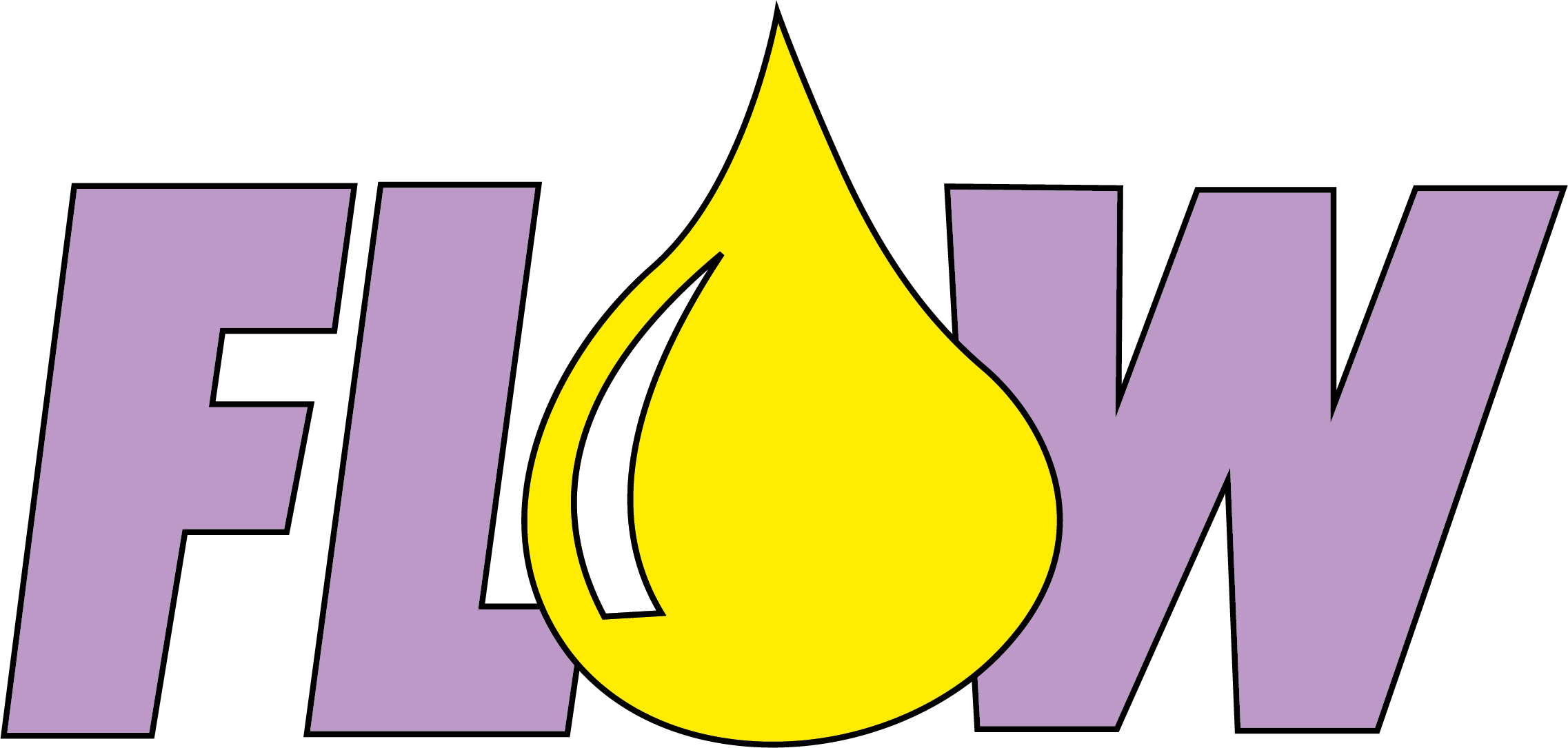FLOWCID

CHLORINE DIOXIDE INTRODUCTION
Although the name Chlorine Dioxide contains the word Chlorine it has nothing to do with Chlorine. Discovered in 1.814, no successful industrial applications or water purifying properties were reckon eventhough it had the best disinfectant properties compare to other products available, due to its unstable properties and making it a high risk product.
Chlorine Dioxide (ClO2) is a powerful disinfectant improving Chlorine and Chlorine By-products properties. Due to its selective oxidant properties, it is not only ideal for water disinfection but also to improve organoleptic water properties.
It has a great effect on flavor and odor control, as well as destroying organic substances that provide odor or precursors of trihalomethanes (THM). It is therefore particularly applied where the water contains high concentrations of precursors which, with traditional chlorination, would give rise to formation of disinfection by-products.
Chlorine dioxide is a yellowish-green, unstable gas that is hardly soluble in water until it reaches a concentration of 1%, above which it is highly explosive.
One of the most interesting properties of chlorine dioxide is its biocidal efficacy in a wide range of pH ranging from 4 to 10.
In addition to its disinfecting properties, chlorine dioxide improves the quality of drinking water, that is, it neutralizes odors, removes color and oxidizes iron, manganese, arsenic, phenols, etc
Chlorine dioxide, as a disinfectant, has the advantage that it reacts directly with the cell wall of microorganisms. This reaction does not depend on time or concentration. Unlike non-oxidizing disinfectants, chlorine dioxide acts on microorganisms even when they are inactive, so effectively the concentration of chlorine dioxide required is less than the concentration of non-oxidizing disinfectants.
Microorganisms can not develop any resistance against chlorine dioxide, the following three aspects, concentration, contact and persistence should be observed for its effectiveness.
Chlorine dioxide remains in the gaseous state in solution. Chlorine dioxide can pass through the layers of bacteria, because it readily dissolves emulsions and hydrocarbons that form these layers.
Chlorine dioxide oxidizes the polysaccharide matrix that holds the biofilm together. During this reaction the chlorine dioxide is reduced to chloride ions. These are divided into pieces of biofilm that remain stable. When the biofilm begins to grow again, an acid environment is created and the chloride ions are transformed into chlorine dioxide that is in charge of eliminating the remaining biofilm keeping the facilities clean and totally Disinfected.

CURRENT MARKET FOR CHLORINE DIOXIDE
– Discovered in 1814
– 1944 first large-scale application in drinking water plant
– 1955 expansion of use in waters of human consumption in the USA
Since that date, generators or reactors of instant production for immediate consumption have been developed that despite the great security problems they bring (numerous explosions, incidents and creation of dangerous byproducts thus using unpure products) continue to expand thanks to the great disinfecting power offered by chlorine dioxide.
At present, the reactors have achieved an acceptable level of safety by generating a production of 60-70% of chlorine dioxide and thus resulting in a production of 30-40% of hazardous waste products and reaction by-products identical to those Which are generated in the use of chlorine. In addition, the product generated by the reactors can not be stored in any case, so its application is limited to flow systems with continuous dosing.
Publications of Stabilized Chlorine Dioxide (SCD) technologies are ever increasing nowadays, actually consisting of sodium chlorite stabilized with sodium bicarbonate, resulting in a dangerous and corrosive product as well as containing very low percentages of chlorine dioxide (Detectable by simply reading any technical sheet).
FLOWCID (CHLORINE DIOXIDE) pure and liquid solution of totally stable chlorine dioxide AT DIFFERENT CONCENTRATIONS, remaining as a gas ion throughout its process and before its chemical decomposition (reduction), transforms into oxygen and small amounts of common salt unlike chlorine dioxide generated by reactors on site that is kinetically unstable and passes through reduced states.
FLOWCID (CHLORINE DIOXIDE)
- Does not produce odor, color or taste in water. It acts as a deodorant by eliminating the bacteria that produce the odor.
- Without free chlorine, without any residue, without by-products (THM, HAA, etc.)
- No risk of explosion, no ADR and no generator required
- Less corrosive than water in uses dosage
- Very high stability concentration while maintaining handling standards
- NO generation of agents that attack the ozone layer
WITHOUT RESISTANCE. WITHOUT RESIDUES. NO SAFETY TIME.
| Sodium hypochlorite | FLOWCID (CHLORINE DIOXIDE) | |
| 1 | Sodium hypochlorite used for disinfection (Professional use) contains between 10% -15% of active ingredient. | 99.9% pure chlorine dioxide in a highly concentrate which does not contain chlorine or free chlorite when dilute in water. |
| 2 | Sodium hypochlorite generates hazardous by-products,Such as THM, HAA and Mutagen X, when in contact With organic compounds in water. | Does not react in any way or generate by-products when in contact with organic material in water. |
| 3 | It is dosed in water by means of a standard dosing pump. Residual levels can be measured by a membrane sensor and / or a photometer. | It is diluted in water by a standard metering pump. Residual levels can be measured by a membrane and / or a photometer, DPD, Potential Redox. Can be applied in any irrigation medium. |
| 4 | It strongly depends on the pH and is efficient at a pH between 7 and 7.5. The pH of the water must be balanced and corrected before disinfection. | It works at 100% between pH 4 and pH 10. The pH should not be corrected or balanced for disinfection. |
| 5 | Very corrosive to all types of materials, pipes and dosing equipment. | NOT corrosive when diluted in water. |
| 6 | It is not selective and reacts with all kinds of materials Organic matter present in the water, which is why It is very quickly consumed. | It is highly selective and, for this reason, will remain active for a long time. This is achieved due a high residual concentration of a product solution (Up to 72 hours in water distribution networks). |
| 7 | It is not effective to remove biofilm or its growth in tanks and / or distribution systems. A shock impact dose with sodium hypochlorite can damage tank materials or piping and plants due to its highly corrosive profile. |
It is highly effective to eliminate biofilm and growth of bacteria in storage tanks and / or distribution systems, irrigation pipes, droppers, (…) |
| 8 | It will not eliminate the problem of taste or odor generated by algae and phenols. | It is effective eliminating the problem of flavor and odor generated by algae and phenols. |
| 9 | Microorganisms can create resistance. Example:Cryptosporidium, Listeria and Legionella. | It acts on all the microorganisms present in the water and the creation of resistance is not possible during all contact with elements, plants, substrates, (…). |
| 10 | It is dosed in water, in general, between 1 and 5 mg / l to disinfect drinking water. A dosage of 3 mg / l of a 10% concentration consumes 30 ml of hypochlorite Sodium per 1,000 liters of water. | In most applications the dosage is reduced 5 to 10 parts with respect to the dosage of Hypochlorite. In the treatment of water for crops, diverse variables require an individualize evaluation for each situation and problem. |
| 11 | It is sold all over the world. Prices and conditions depend on the country and the product volumes of each delivery. | Raw materials manufactured in Spain and available for all around the world. The price and directions depend on the country and the volumes of the product, although it is totally competitive given the number of problems it solves. |
NAMES AND USES
- FLOWCID SD TP2 (gis): Relevant uses: Professional product for the purpose of disinfecting surfaces without contact with food or animal feed.
- Disinfection and sanitization of hospital areas, air conditioning systems, sanitary facilities, schools, playground areas, etc.
- Disinfection and sanitization of chemical toilets, waste water of all kinds, waste from hospitals, land and substrates of areas of public use, among others.
- Disinfection and sanitization of facilities and surfaces in areas such as swimming pools and public baths, spas, aquariums, etc.
- Deodorizing action to eliminate odor causing pathogens.
- Disinfection of air, surfaces, materials, equipment and furniture having no contact with food or animal feed in an industrial or private environment
- FLOWCID SWP TP2 (gis):Relevant uses: Product for professional use in water treatments of Pools, Spas, other bathing systems and Aquariums.
- Water disinfectant to use in private and public health areas.
- Sanitation and disinfection of swimming pool water, spas, aquariums, bathing waters and others.
- Treatment of biofilm and biofouling of such facilities.
- FLOWCID VH TP3 (gis):Relevant uses: Professional product for veterinary hygiene purposes.
- Sanitation and disinfection of all types of facilities where animals are kept, maintained or transported.
- Sanitation and disinfection of farms, fish farms, stalls, feeding or drinking equipment and other utensils in use or in contact with animals.
- Its effectiveness acts as a deodorant in controlling odor-causing pathogens.
- FLOWCID VH TP3 (gis) breasts: Relevant uses: Product for professional use in Hygiene and Body disinfection, mouth, nipples of animals.
- FLOWCID FI TP4 (gis): Relevant uses: Professional product in sanitization and disinfection in the Food Industry. (Food Industry)
- Use in hygiene and disinfection in the food industry.
- Disinfection of equipment, containers, consumption utensils, surfaces, environment and pipelines related to the production, transportation, storage or consumption of food, beverages or animal feed (including drinking water) for humans or animals.
- Application in all types of food industries (slaughterhouses, fish plants, supermarkets, food handling plants, fruit and vegetable industries, agriculture, etc.).
- FLOWCID ICS TP11 (gis): Relevant uses: -Higienization and disinfection for the preservation of water or other inhibiting liquids in refrigeration systems and / or industrial processes, evaporative condensers, industrial humidifiers, etc., by controlling harmful elements Such as microbes, algae, mussels, molluscs, etc.
- FLOWCID ICS TP11 (gis): Relevant uses: Hygiene and disinfection for the preservation of water or other inhibiting liquids in refrigeration systems and / or industrial processes, evaporative condensers, industrial humidifier plants, etc., by controlling harmful elements such as microbes, algae , Mussels, molluscs, etc.
- FLOWCID TP11 (gis): Relevant uses: Professional product for treatment of Legionella in refrigeration systems.
- Disinfectant for Legionella treatment.
- Use in cooling towers, evaporative condensers, hot water systems, ornamental fountains, fire-fighting systems, etc.
- FLOWCID AM TP12 (gis): Relevant uses: Professional product for prevention, control and elimination of molds
- FLOWCID AM TP12: Relevant uses: Professional product for prevention, control and elimination of molds.
- FLOWCID (CHLORINE DIOXIDE) (gis): Relevant uses: Professional product for disinfection of drinking water, for both people and animals
- FLOWCID (CHLORINE DIOXIDE) TP5 (gis): Relevant uses: Product for professional use in disinfection of human or animal consumption water.
- FLOWCID (CHLORINE DIOXIDE) (gis): Relevant uses: Product for professional use in disinfection of human or animal consumption water.
- FLOWCID AGRI TP5 (gis): Relevant uses: Phytosanitary protection use. For professional use in Agriculture
- Disinfection of pipes and irrigation systems, biofilm and biofouling.
- Hygiene and disinfection of work tools.
- Hygiene and disinfection of coconut fiber, seedlings, substrates, boxes and trays.
- Sanitation and disinfection of irrigation water of any use.
- Hygiene in washing vegetable and fruit products and gama IV.
- Stimulation, by disinfection, of the healthy growth of plants.
- FLOWCID TERRA TP 4 (gis): Relevant uses: Phytosanitary defense use. For professional use in Agriculture.
- Sanitation and disinfection of agricultural lands and soils without plants.
- Sanitation and disinfection of cisterns, tanks and water storage systems.
- Sanitization and disinfection of equipment, utensils and tools used in agriculture.
- Disinfection of surfaces, conservation chambers, vehicles, containers, etc.
